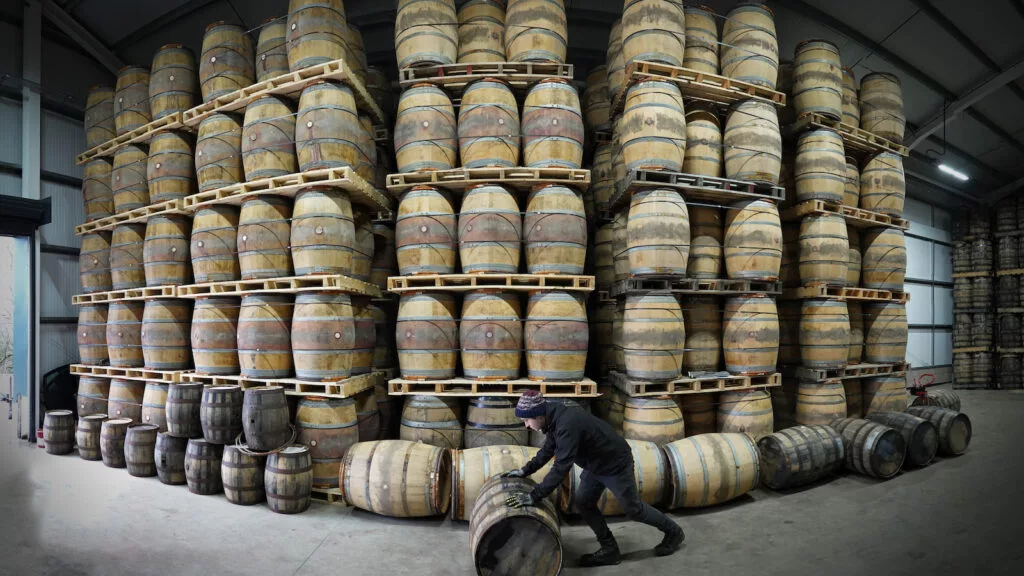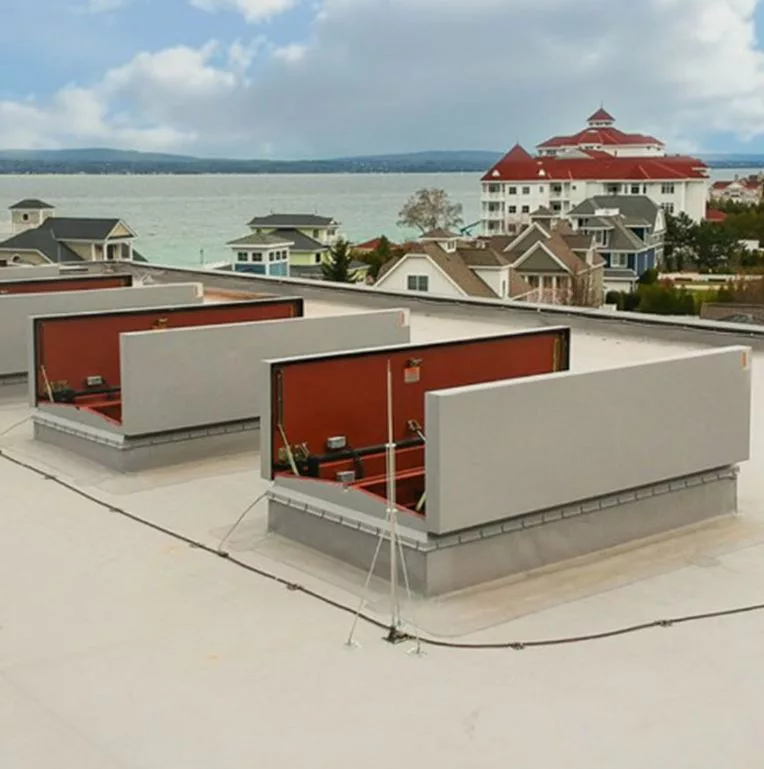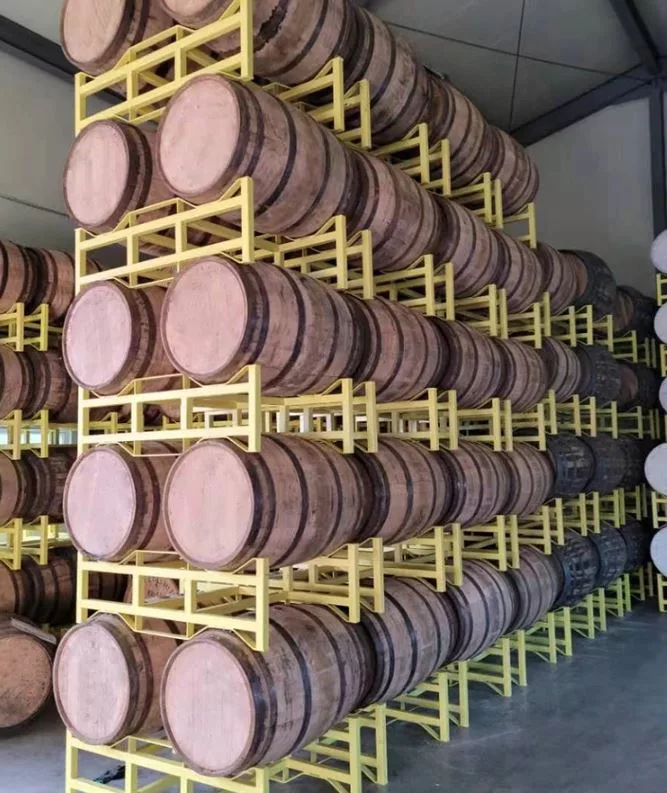If you are storing barrels containing spirits in your facility, over 6 ft in height, then the provisions of chapter 32 of the IFC apply. This post is based on the 2015 IFC. These concepts generally apply to 2021 IFC as well, with minor adjustments.

Chapter 32 of the IFC is titled “High-Piled Combustible Storage”, and there are several important implications that this may have on the design of your barrel storage area/ building that will be covered here.
High-Piled Combustible Storage is defined in the IFC as:
Storage of combustible materials in closely packed piles or combustible
materials on pallets, in racks or on shelves where the top of
storage is greater than 12 feet (3658 mm) in height. Where
required by the fire code official, high-piled combustible storage
also includes certain high-hazard commodities, such as
rubber tires, Group A plastics, flammable liquids, idle pallets
and similar commodities, where the top of storage is greater
than 6 feet (1829 mm) in height.
Per IFC 3203.6, high proof alcohol in barrels would be considered a high hazard commodity, and is subject to high piled combustible storage provisions when exceeded 6 ft in storage height.
Generally, there are not any major implications until you have a pretty sizeable area of barrel storage. 2,500 sf is a key number where some implications come into play. The chart shown below, from the IFC shows the various requirements that are required or not required based on the commodity and storage size/ area.

Under 500 SF, there are virtually no notable requirements coming from this chapter. Note that even though this chapter would not require automatic fire extinguishers (sprinklers), they would still be required if exceeding the MAQ’s of 120 gallons /240 gallons (Non sprinklered vs sprinkled).
Between 501 sf- 2,500 sf, there are a few options, dependent on public accessibility to the areas as well. We have never utilized nonpublic accessible option 2, because that is the only option that requires fire detection, which is not necessary in any other categories. Pile lengths, heights, and volumes come into play here.
2,501 to 300,000 sf now has some bigger implications. Piles can be a little taller than smaller sizes (30 ft). Building access and smoke/ heat removal are required over 2,501 sf, which will be explained below.
Over 300,000 is pretty similar to the previous category, with some footnotes that you can refer to in the IFC for further investigation. Over 300,000 sf is rare, perhaps unheard of, especially for a barrel warehouse.
Building Access
Building access is required for over 2,500 sf high piled storage areas. IFC 3206.6 states that a fire apparatus access road (fire lane) must be within 150 ft of all exterior points on the building used for high piled storage. This section also requires any area facing such fire lanes, must have fire department access doors (ingress doors), spaced a maximum of every 100 ft (2015 IFC 3206.6.1.1). These fire doors should be marked as such with no blocking language per the IFC.
Smoke & Heat Removal
Also for storage areas over 2,500 sf, smoke and heat removal is required. We can achieve this in two ways. Smoke vents, or mechanical ventilation. Smoke vents go on the roof, and automatically open upon a certain temperature to release smoke out of the building in case of a fire. IFC section 910 provides additional information including sizing/ placement of smoke vents. This section also provides provisions for mechanical smoke removal. This can be roof or wall, powered fans designed to sweep smoke out of the building in case of fire. As opposed to the roof smoke vents which are automatic, these are manually operated by the fire department at a switch, usually located outside of the building. Make up air shall be within 6 ft of the floor and the code provides a method for sizing such make up air openings.

Pile size and Aisles
Generally, piles are limited to 50 ft in length and 20-30 ft in height. Note that 2021 IFC changes the max length to 60 ft. In order to separate piles, you must have aisles between them. Aisles shall generally be 44″ minimum per IFC 3206.9.1.1.
Dead Ends
IFC 3206.9.3 states that dead ends shall be limited to 50 ft. But, if your barrel storage is designated as an H-3 occupancy, there is a 25 ft max common path of egress travel distance that would override this, effectively making it so there can only be 25 ft max dead ends. In 2021 and later codes, barrel storage warehouses may be designated as S-1, which allow a longer common path of egress travel distance.
